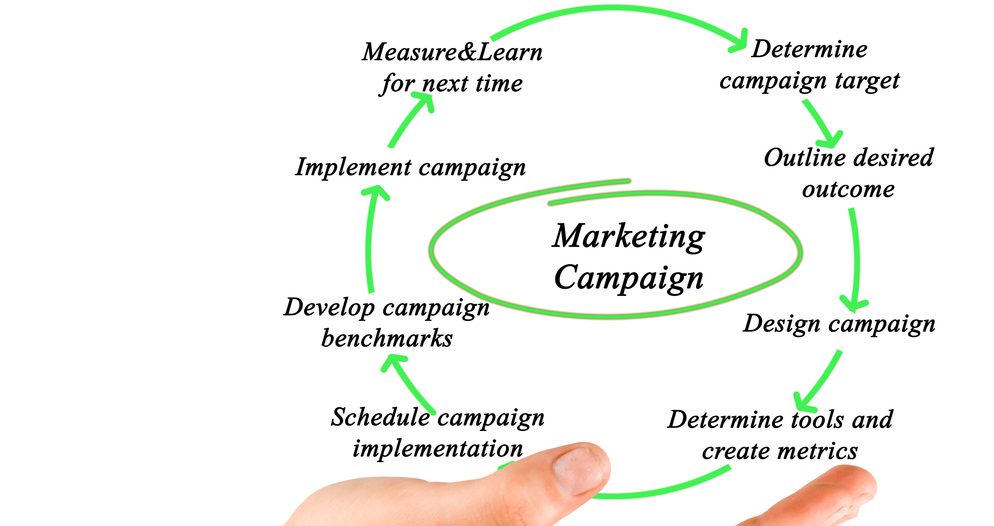
Your Guide to Healthcare Public Relations Strategies
A successful PR healthcare plan mixes traditional marketing methods with modern digital campaign strategies. PR has evolved from the days of just asking to be mentioned in the media. As a result, healthcare businesses must adapt and build relationships to achieve success.
While 73% of journalists search the internet for press releases, this still leaves 23% who are looking for news from other sources.
With social media and blogs, there has been a rapid rise in online influencers that have gained huge followings and have become critical to the success of modern-day healthcare marketing campaigns.
Sure, being referenced in the local newspaper will drum up some interest, but not compared to businesses that craft marketing tactics that appeal to the masses.
With this in mind, here’s our ultimate healthcare PR guide. This article will cover:
 Before doing anything, you must define the objectives of your healthcare PR strategy. This will keep you focused and help you track progress throughout the campaign. PR is used for many things, such as increasing sales, improving brand awareness, or accessing a wider audience.
One way you can stay on track is by using SMART goals. Professional Academy defines SMART goals as:
Before doing anything, you must define the objectives of your healthcare PR strategy. This will keep you focused and help you track progress throughout the campaign. PR is used for many things, such as increasing sales, improving brand awareness, or accessing a wider audience.
One way you can stay on track is by using SMART goals. Professional Academy defines SMART goals as:
 As the saying goes, ‘content is king’. The online world defines your business by the type of content that you produce. In other words, does the information you provide to your audience give them something of value? Can they walk away knowing that you have benefitted them in some way?
In the marketing world, this is called compelling content. We call it, content that sell.
Just think about it – you’re reading this article on the blog of an agency that helps other healthcare organizations with their PR efforts. If you find this article helpful, you’re likely going to reach out to us to learn more about what you do. That’s the power of compelling content.
Content shouldn’t be just something that you throw together and expect people to love it the moment they see it. It must stick around in someone’s mind. In fact, 70% of consumers prefer getting to know a company via articles rather than ads (one of the main reasons why at Digital Authority Partners we put all our efforts into content marketing versus display ads).
For example, a healthcare business developing a health monitor could write about all the benefits of keeping an eye on your heart rate. One of the benefits could include the use of your app.
However, quality content is not a sales pitch. In fact, 71% of buyers/readers say they were turned off by content that seems like a sales pitch. Your content must be made with the customer in mind, not your profits.
Quality content gets shared with friends, family and work colleagues, who will then share it with their own circles and so on. The more your content engages a specific reader, the more likely it will be picked up by media or news outlets, generating even further interest from other websites and businesses.
As the saying goes, ‘content is king’. The online world defines your business by the type of content that you produce. In other words, does the information you provide to your audience give them something of value? Can they walk away knowing that you have benefitted them in some way?
In the marketing world, this is called compelling content. We call it, content that sell.
Just think about it – you’re reading this article on the blog of an agency that helps other healthcare organizations with their PR efforts. If you find this article helpful, you’re likely going to reach out to us to learn more about what you do. That’s the power of compelling content.
Content shouldn’t be just something that you throw together and expect people to love it the moment they see it. It must stick around in someone’s mind. In fact, 70% of consumers prefer getting to know a company via articles rather than ads (one of the main reasons why at Digital Authority Partners we put all our efforts into content marketing versus display ads).
For example, a healthcare business developing a health monitor could write about all the benefits of keeping an eye on your heart rate. One of the benefits could include the use of your app.
However, quality content is not a sales pitch. In fact, 71% of buyers/readers say they were turned off by content that seems like a sales pitch. Your content must be made with the customer in mind, not your profits.
Quality content gets shared with friends, family and work colleagues, who will then share it with their own circles and so on. The more your content engages a specific reader, the more likely it will be picked up by media or news outlets, generating even further interest from other websites and businesses.
 There are so many ways to get your message across such as:
There are so many ways to get your message across such as:
 As a healthcare professional or medical brand, it makes sense to be featured in healthcare-specific publications.
As Entrepreneur explains so eloquently, while getting covered on the Oil & Gas Journal, or Offshore might not seem like such a big deal to the average Joe, these publications offer a direct channel to the people who are really interested in what you have to say – assuming you work a field connected to oil and gas.
Now, these publications may not be well known but they have high readerships and allow you to word your content with far more technical language and heavy-hitting data reports compared to standard publications.
Your particular business may crossover into more than one category, for example, it would make sense for a healthcare app development company to publish in both the healthcare and technology sectors.
Websites like Web Wire can help you find trade publications by industry to help you find one that best suits your business and goals. From here, use curate a personalised email to the publisher that provides value, possibly some content, and build the relationship.
Alternatively, a Google search can help you find industry-related publications. Most of the time, you’ll be able to tell what industry they are in based on the name. For example, the Wall Street Journal looks at, you guessed it, Wall Street, home of the biggest stock exchange in the world. The Economist, the same thing. HealthcareWeekly – covers healthcare. You get the idea.
Obviously, not every publication makes it that obvious but a quick browse through a few pages and article will show you everything you need to know.
As a healthcare professional or medical brand, it makes sense to be featured in healthcare-specific publications.
As Entrepreneur explains so eloquently, while getting covered on the Oil & Gas Journal, or Offshore might not seem like such a big deal to the average Joe, these publications offer a direct channel to the people who are really interested in what you have to say – assuming you work a field connected to oil and gas.
Now, these publications may not be well known but they have high readerships and allow you to word your content with far more technical language and heavy-hitting data reports compared to standard publications.
Your particular business may crossover into more than one category, for example, it would make sense for a healthcare app development company to publish in both the healthcare and technology sectors.
Websites like Web Wire can help you find trade publications by industry to help you find one that best suits your business and goals. From here, use curate a personalised email to the publisher that provides value, possibly some content, and build the relationship.
Alternatively, a Google search can help you find industry-related publications. Most of the time, you’ll be able to tell what industry they are in based on the name. For example, the Wall Street Journal looks at, you guessed it, Wall Street, home of the biggest stock exchange in the world. The Economist, the same thing. HealthcareWeekly – covers healthcare. You get the idea.
Obviously, not every publication makes it that obvious but a quick browse through a few pages and article will show you everything you need to know.
 Hubspot reports that millennials are 247% more likely to be influenced by blogs or social networking sites than any other PR technique.
While it is great to share your content on your own social media pages with your own contacts and followers, wouldn’t it be great to have it shared by people with greater influence in the industry?
Enter the ‘influencer’ world.
The term ‘influencer’ has become a sort of buzzword in the digital marketing world. It refers to industry-specific people or websites that have become authoritative in their field and attract regular views.
Examples include journalists, bloggers, or even social media stars in this day and age, who have developed trust from their following. These are ideal people to share your content but it must fit their profile.
Want to know how much people trust online influencers? Here’s a stat for you: 92% of consumers trust influencers more than ads or celebrity endorsements.
Now, don’t get all too excited and starting throwing your entire healthcare PR budget on someone that has a regular audience. Influencers are people that have spent a lot of time building their own brand.
After all, they will have had to earn their followers’ trust and respect so if they are seen to just sell out to the highest bidder, regardless of the product or service they promote, they will lose their audience and reputation a lot faster than they won it.
Start by engaging with influencers across social accounts. Comment and demonstrate your knowledge in their area to start building a relationship. You could even curate content that the influencer would enjoy reading as a response to their own.
This has a couple of benefits.
Firstly, working with an influencer gets you instant access to their followers. You won’t necessarily be promoting to them directly but by showing yourself as an active member of that community, you start gaining respect and trust from the audience.
Secondly, once you start pitching your ideas to influencers, they’ll know about you and your brand. Online influencers get a lot of ‘white noise’ attention, drowning out most of the mentions that comes their way; most of the time, it’s not providing value to them.
Hubspot reports that millennials are 247% more likely to be influenced by blogs or social networking sites than any other PR technique.
While it is great to share your content on your own social media pages with your own contacts and followers, wouldn’t it be great to have it shared by people with greater influence in the industry?
Enter the ‘influencer’ world.
The term ‘influencer’ has become a sort of buzzword in the digital marketing world. It refers to industry-specific people or websites that have become authoritative in their field and attract regular views.
Examples include journalists, bloggers, or even social media stars in this day and age, who have developed trust from their following. These are ideal people to share your content but it must fit their profile.
Want to know how much people trust online influencers? Here’s a stat for you: 92% of consumers trust influencers more than ads or celebrity endorsements.
Now, don’t get all too excited and starting throwing your entire healthcare PR budget on someone that has a regular audience. Influencers are people that have spent a lot of time building their own brand.
After all, they will have had to earn their followers’ trust and respect so if they are seen to just sell out to the highest bidder, regardless of the product or service they promote, they will lose their audience and reputation a lot faster than they won it.
Start by engaging with influencers across social accounts. Comment and demonstrate your knowledge in their area to start building a relationship. You could even curate content that the influencer would enjoy reading as a response to their own.
This has a couple of benefits.
Firstly, working with an influencer gets you instant access to their followers. You won’t necessarily be promoting to them directly but by showing yourself as an active member of that community, you start gaining respect and trust from the audience.
Secondly, once you start pitching your ideas to influencers, they’ll know about you and your brand. Online influencers get a lot of ‘white noise’ attention, drowning out most of the mentions that comes their way; most of the time, it’s not providing value to them.

 The key to personal relations healthcare outreach is to create value (it’s that word again) and to personalize it for every contact. If you’re opening lines are along the lines of ‘Hey there, I enjoyed your latest post and was wondering if I could have…’, you’d best believe that no one is reading it.
It’s so generic, it could have been written by anyone and with little to no effort. Are they the type of people you want to do business with? Again, unlikely, so don’t give them an excuse to delete your email.
Make sure you address the contact by their name. Studies have shown that personalized emails including the recipient’s first name in the subject line have higher open rates.
From here, reference something personal to their website or blog post. This will show that you actually have read what they’ve written. Also, explain where and how you found their blog.
Then go on to explain how your email will benefit them, such as providing exciting and useful content for their readers that will get them more pageviews etc. Give them choices – your first idea may not quite be what they would be interested in but your third or fourth just might.
Now for the important bit: be original.
It doesn’t matter if it’s for healthcare PR or any other business industry, no one wants recycled content on their page. Anyone can just copy and paste content from a Google search and claim it as their own but businesses will check your work for plagiarism. If they see that you’ve cheated, you’ll burn that contact forever.
The key to personal relations healthcare outreach is to create value (it’s that word again) and to personalize it for every contact. If you’re opening lines are along the lines of ‘Hey there, I enjoyed your latest post and was wondering if I could have…’, you’d best believe that no one is reading it.
It’s so generic, it could have been written by anyone and with little to no effort. Are they the type of people you want to do business with? Again, unlikely, so don’t give them an excuse to delete your email.
Make sure you address the contact by their name. Studies have shown that personalized emails including the recipient’s first name in the subject line have higher open rates.
From here, reference something personal to their website or blog post. This will show that you actually have read what they’ve written. Also, explain where and how you found their blog.
Then go on to explain how your email will benefit them, such as providing exciting and useful content for their readers that will get them more pageviews etc. Give them choices – your first idea may not quite be what they would be interested in but your third or fourth just might.
Now for the important bit: be original.
It doesn’t matter if it’s for healthcare PR or any other business industry, no one wants recycled content on their page. Anyone can just copy and paste content from a Google search and claim it as their own but businesses will check your work for plagiarism. If they see that you’ve cheated, you’ll burn that contact forever.
 This is the oldest technique in the book. A large part of PR involves picking up the telephone and pitching your story to the receiver. Even if your email outreach has been perfected, there is still always the risk that it ends up in spam, get ignored or still even deleted.
According to Ragan, 91% of email users have unsubscribed from a company email that they had previously opted into.
This cannot happen with a phone call.
We talked earlier about getting personal with an email. Well, can you think or a more personalized touch with communication than speaking directly to your target? There will be times and situations where cold calling can build a relationship better than a cold email.
Once you get talking however the same rules apply. Provide value from the call; how can they benefit from talking to you?
This is the oldest technique in the book. A large part of PR involves picking up the telephone and pitching your story to the receiver. Even if your email outreach has been perfected, there is still always the risk that it ends up in spam, get ignored or still even deleted.
According to Ragan, 91% of email users have unsubscribed from a company email that they had previously opted into.
This cannot happen with a phone call.
We talked earlier about getting personal with an email. Well, can you think or a more personalized touch with communication than speaking directly to your target? There will be times and situations where cold calling can build a relationship better than a cold email.
Once you get talking however the same rules apply. Provide value from the call; how can they benefit from talking to you?
 Press releases make another great addition to your public relations healthcare strategy. They are universally recognized by journalists and can be expected when working with all sorts of businesses and brands.
Whether working with journalists and traditional publications to bloggers and influencers, at the end of the day, everyone wants to get to the point. They will ultimately decide to write about your brand based on how quickly you can deliver your message and values.
This is why they work well: press releases only contain the core facts that people need to know.
Furthermore, press releases are convenient. Regular media packs can be large, multiple documents that are difficult to download. You may even need several copies in different formats depending which is used by which journalist or publication when sending them.
Why bother with all the hassle? It just slows everything down. A single press release document, containing all the information they need streamlines the entire process outreach process.
Press releases make another great addition to your public relations healthcare strategy. They are universally recognized by journalists and can be expected when working with all sorts of businesses and brands.
Whether working with journalists and traditional publications to bloggers and influencers, at the end of the day, everyone wants to get to the point. They will ultimately decide to write about your brand based on how quickly you can deliver your message and values.
This is why they work well: press releases only contain the core facts that people need to know.
Furthermore, press releases are convenient. Regular media packs can be large, multiple documents that are difficult to download. You may even need several copies in different formats depending which is used by which journalist or publication when sending them.
Why bother with all the hassle? It just slows everything down. A single press release document, containing all the information they need streamlines the entire process outreach process.
 The final step to creating a successful healthcare PR campaign is looking over your processes and finding out what worked well, what didn’t go to plan and how you can improve.
If the campaign is going well, note down why so it can be repeated in going forward. If there have been a lot of obstacles that got in the way, these need to be ironed out as soon as possible to avoid wasting time.
Even though is the final step, it doesn’t mean that once you have assessed the campaign, it’s over. Far from it. You need to be constantly referring to your strategy to see if you are on track to meet the specified targets.
The final step to creating a successful healthcare PR campaign is looking over your processes and finding out what worked well, what didn’t go to plan and how you can improve.
If the campaign is going well, note down why so it can be repeated in going forward. If there have been a lot of obstacles that got in the way, these need to be ironed out as soon as possible to avoid wasting time.
Even though is the final step, it doesn’t mean that once you have assessed the campaign, it’s over. Far from it. You need to be constantly referring to your strategy to see if you are on track to meet the specified targets.
- The outcome of your public relations healthcare campaigns
- The content you need to create to get PR coverage
- Different ways you can get your content in front of relevant audiences
- How to contact the correct people
- How to assess & measure the performance of your overall healthcare PR strategy
Watch this video to learn more about the Digital Authority Partners approach to Medical SEO!
1. Decide on the outcome
 Before doing anything, you must define the objectives of your healthcare PR strategy. This will keep you focused and help you track progress throughout the campaign. PR is used for many things, such as increasing sales, improving brand awareness, or accessing a wider audience.
One way you can stay on track is by using SMART goals. Professional Academy defines SMART goals as:
Before doing anything, you must define the objectives of your healthcare PR strategy. This will keep you focused and help you track progress throughout the campaign. PR is used for many things, such as increasing sales, improving brand awareness, or accessing a wider audience.
One way you can stay on track is by using SMART goals. Professional Academy defines SMART goals as:
- S: Specific – what exactly do you want to achieve?
- M: Measurable – is this goal quantifiable?
- A: Achievable – can you reach the goal you’re after?
- R: Realistic – can this actually be done with the resources you have available?
- T: Timebound – how long are you going set this goal for?
2. Create interesting content
 As the saying goes, ‘content is king’. The online world defines your business by the type of content that you produce. In other words, does the information you provide to your audience give them something of value? Can they walk away knowing that you have benefitted them in some way?
In the marketing world, this is called compelling content. We call it, content that sell.
Just think about it – you’re reading this article on the blog of an agency that helps other healthcare organizations with their PR efforts. If you find this article helpful, you’re likely going to reach out to us to learn more about what you do. That’s the power of compelling content.
Content shouldn’t be just something that you throw together and expect people to love it the moment they see it. It must stick around in someone’s mind. In fact, 70% of consumers prefer getting to know a company via articles rather than ads (one of the main reasons why at Digital Authority Partners we put all our efforts into content marketing versus display ads).
For example, a healthcare business developing a health monitor could write about all the benefits of keeping an eye on your heart rate. One of the benefits could include the use of your app.
However, quality content is not a sales pitch. In fact, 71% of buyers/readers say they were turned off by content that seems like a sales pitch. Your content must be made with the customer in mind, not your profits.
Quality content gets shared with friends, family and work colleagues, who will then share it with their own circles and so on. The more your content engages a specific reader, the more likely it will be picked up by media or news outlets, generating even further interest from other websites and businesses.
As the saying goes, ‘content is king’. The online world defines your business by the type of content that you produce. In other words, does the information you provide to your audience give them something of value? Can they walk away knowing that you have benefitted them in some way?
In the marketing world, this is called compelling content. We call it, content that sell.
Just think about it – you’re reading this article on the blog of an agency that helps other healthcare organizations with their PR efforts. If you find this article helpful, you’re likely going to reach out to us to learn more about what you do. That’s the power of compelling content.
Content shouldn’t be just something that you throw together and expect people to love it the moment they see it. It must stick around in someone’s mind. In fact, 70% of consumers prefer getting to know a company via articles rather than ads (one of the main reasons why at Digital Authority Partners we put all our efforts into content marketing versus display ads).
For example, a healthcare business developing a health monitor could write about all the benefits of keeping an eye on your heart rate. One of the benefits could include the use of your app.
However, quality content is not a sales pitch. In fact, 71% of buyers/readers say they were turned off by content that seems like a sales pitch. Your content must be made with the customer in mind, not your profits.
Quality content gets shared with friends, family and work colleagues, who will then share it with their own circles and so on. The more your content engages a specific reader, the more likely it will be picked up by media or news outlets, generating even further interest from other websites and businesses.
Schedule Your Free Consultation
Looking To Meet Now? Schedule A Meeting Today
Examples of public relations healthcare content
One of the most effective ways to improve your healthcare PR strategy is by writing tutorial guides on topics relevant to your target audience (aka ‘how to guides’). This is because readers want to know exactly what value they are getting from the content they’re reading – how to solve a specific problem they have. Quick example: This post from Zava shows readers how to prevent malaria. Their tips are factually correct and the advice itself is sound. This makes it perfect for sharing with people looking to go abroad on vacation or traveling to climates where mosquitoes are present. Alternatively, you could release an interview, giving your readers the opportunity to learn from another healthcare expert. Conduct research into who your viewers also follow and invite them to an interview. Finally, consider creating amazing infographics (we, humans, are visual creatures!). In terms of shares, infographics are more likely to be shared than any other types of content. The more attractive and educational the better. For example, Clearstate highlighted the events to look out for in 2018 in some of the biggest healthcare markets, while Healthcare Intelligence Network created an infographic describing the impact of telemedicine in 2015. The link is here, respectively. Or, in our case, check out this article with an awesome infographic on healthcare marketing. Once you know the content you are going to create, you need to think about where you want it to feature. Which brings us to step 3.3. Choose your public relations healthcare channel
 There are so many ways to get your message across such as:
There are so many ways to get your message across such as:
Traditional PR
When you think of traditional PR, the first things that come to mind are newspapers, TV, radio, billboards… you get the idea. Those in traditional PR are likely to have access to a host of media contacts they engage with. Traditional PR can be very successful in terms of increasing brand awareness, however, tracking its success is a lot harder compared to digital PR. For example, when you publish a TV ad, you can only get an average number of viewers, which isn’t too helpful. How many people actually watched the ad is another thing entirely (and hint: NO ONE knows exactly!). Traditional PR requires patience. If you plan on making brochures or setting up a billboard, it will take time to write, print, set up, etc. You may also need to research which topics are being covered in a particular month and the corresponding publishing date. Nevertheless, traditional methods will work great as part of your public relations healthcare strategy, even in the modern digitalized world. This applies especially to audiences that spend more time away from the internet.Featuring your healthcare business in industry specific publications
 As a healthcare professional or medical brand, it makes sense to be featured in healthcare-specific publications.
As Entrepreneur explains so eloquently, while getting covered on the Oil & Gas Journal, or Offshore might not seem like such a big deal to the average Joe, these publications offer a direct channel to the people who are really interested in what you have to say – assuming you work a field connected to oil and gas.
Now, these publications may not be well known but they have high readerships and allow you to word your content with far more technical language and heavy-hitting data reports compared to standard publications.
Your particular business may crossover into more than one category, for example, it would make sense for a healthcare app development company to publish in both the healthcare and technology sectors.
Websites like Web Wire can help you find trade publications by industry to help you find one that best suits your business and goals. From here, use curate a personalised email to the publisher that provides value, possibly some content, and build the relationship.
Alternatively, a Google search can help you find industry-related publications. Most of the time, you’ll be able to tell what industry they are in based on the name. For example, the Wall Street Journal looks at, you guessed it, Wall Street, home of the biggest stock exchange in the world. The Economist, the same thing. HealthcareWeekly – covers healthcare. You get the idea.
Obviously, not every publication makes it that obvious but a quick browse through a few pages and article will show you everything you need to know.
As a healthcare professional or medical brand, it makes sense to be featured in healthcare-specific publications.
As Entrepreneur explains so eloquently, while getting covered on the Oil & Gas Journal, or Offshore might not seem like such a big deal to the average Joe, these publications offer a direct channel to the people who are really interested in what you have to say – assuming you work a field connected to oil and gas.
Now, these publications may not be well known but they have high readerships and allow you to word your content with far more technical language and heavy-hitting data reports compared to standard publications.
Your particular business may crossover into more than one category, for example, it would make sense for a healthcare app development company to publish in both the healthcare and technology sectors.
Websites like Web Wire can help you find trade publications by industry to help you find one that best suits your business and goals. From here, use curate a personalised email to the publisher that provides value, possibly some content, and build the relationship.
Alternatively, a Google search can help you find industry-related publications. Most of the time, you’ll be able to tell what industry they are in based on the name. For example, the Wall Street Journal looks at, you guessed it, Wall Street, home of the biggest stock exchange in the world. The Economist, the same thing. HealthcareWeekly – covers healthcare. You get the idea.
Obviously, not every publication makes it that obvious but a quick browse through a few pages and article will show you everything you need to know.
Build relationships with influencers
 Hubspot reports that millennials are 247% more likely to be influenced by blogs or social networking sites than any other PR technique.
While it is great to share your content on your own social media pages with your own contacts and followers, wouldn’t it be great to have it shared by people with greater influence in the industry?
Enter the ‘influencer’ world.
The term ‘influencer’ has become a sort of buzzword in the digital marketing world. It refers to industry-specific people or websites that have become authoritative in their field and attract regular views.
Examples include journalists, bloggers, or even social media stars in this day and age, who have developed trust from their following. These are ideal people to share your content but it must fit their profile.
Want to know how much people trust online influencers? Here’s a stat for you: 92% of consumers trust influencers more than ads or celebrity endorsements.
Now, don’t get all too excited and starting throwing your entire healthcare PR budget on someone that has a regular audience. Influencers are people that have spent a lot of time building their own brand.
After all, they will have had to earn their followers’ trust and respect so if they are seen to just sell out to the highest bidder, regardless of the product or service they promote, they will lose their audience and reputation a lot faster than they won it.
Start by engaging with influencers across social accounts. Comment and demonstrate your knowledge in their area to start building a relationship. You could even curate content that the influencer would enjoy reading as a response to their own.
This has a couple of benefits.
Firstly, working with an influencer gets you instant access to their followers. You won’t necessarily be promoting to them directly but by showing yourself as an active member of that community, you start gaining respect and trust from the audience.
Secondly, once you start pitching your ideas to influencers, they’ll know about you and your brand. Online influencers get a lot of ‘white noise’ attention, drowning out most of the mentions that comes their way; most of the time, it’s not providing value to them.
Hubspot reports that millennials are 247% more likely to be influenced by blogs or social networking sites than any other PR technique.
While it is great to share your content on your own social media pages with your own contacts and followers, wouldn’t it be great to have it shared by people with greater influence in the industry?
Enter the ‘influencer’ world.
The term ‘influencer’ has become a sort of buzzword in the digital marketing world. It refers to industry-specific people or websites that have become authoritative in their field and attract regular views.
Examples include journalists, bloggers, or even social media stars in this day and age, who have developed trust from their following. These are ideal people to share your content but it must fit their profile.
Want to know how much people trust online influencers? Here’s a stat for you: 92% of consumers trust influencers more than ads or celebrity endorsements.
Now, don’t get all too excited and starting throwing your entire healthcare PR budget on someone that has a regular audience. Influencers are people that have spent a lot of time building their own brand.
After all, they will have had to earn their followers’ trust and respect so if they are seen to just sell out to the highest bidder, regardless of the product or service they promote, they will lose their audience and reputation a lot faster than they won it.
Start by engaging with influencers across social accounts. Comment and demonstrate your knowledge in their area to start building a relationship. You could even curate content that the influencer would enjoy reading as a response to their own.
This has a couple of benefits.
Firstly, working with an influencer gets you instant access to their followers. You won’t necessarily be promoting to them directly but by showing yourself as an active member of that community, you start gaining respect and trust from the audience.
Secondly, once you start pitching your ideas to influencers, they’ll know about you and your brand. Online influencers get a lot of ‘white noise’ attention, drowning out most of the mentions that comes their way; most of the time, it’s not providing value to them.
Schedule Your Free Consultation
Looking To Meet Now? Schedule A Meeting Today
Examples of integrating influencers in public relations healthcare strategies
Dr Sandra Lee has grown a huge following from her YouTube channel, with over 4.8 million subscribers and more than 2.5 billion channel views. She specializes in skin care and cosmetics and appears on a number of different TV shows. She offers viewers the chance to see what her job is like, how she interacts with the patients she treats and just general tips (as well as showing off her skills!) She started her channel to discuss common skin issues but it has grown into a huge healthcare influencer. Knowing this, it would make sense to try and build a relationship with her for healthcare companies specifically in the dermatology or cosmetic surgery industries. There is also Christina Farr, who is a journalist at CNBC that focuses on the health and technology industries. She has a smaller following with just over 40,000 followers but these are no less valuable. Christina’s followers trust in her reporting. Healthcare PR strategies may want to include commenting on her stories and creating content based on some of the topics she covers. She may then invite you to interview to discuss your thoughts in person, exposing you and your brand to a broader audience. The idea here is to build relationships with people that have already established an audience with your industry, building reputation, credibility and trust. Once you know what and how you are going to get your content across, you need to contact the right people.4. Contacting the right people

Create personalized email outreach programs
Outreach email programs is another way to plan a successful healthcare PR campaign. Create content that another website or business in your industry can find useful and reference in something of their own. The idea of outreach is simple: contact an outlet that will expose your business and brand to a greater audience. Sounds easy right? Well, not quite. See, online businesses are starting to catch up, realizing that the only reason why you are contacting them is for self-promotion. And it makes sense: would you let someone promote themselves on your page without getting anything back? Unlikely. This is what makes outreach difficult. If you make it too obvious that all you’re looking for is media attention, your outreach will be discarded. You won’t be alone at this either. Site owners will get hundreds of emails just like yours, all with the same aim of getting extra exposure. You must build a relationship with them – after all, why should they publish or reference your content over another?How to write outreach public relations healthcare emails
 The key to personal relations healthcare outreach is to create value (it’s that word again) and to personalize it for every contact. If you’re opening lines are along the lines of ‘Hey there, I enjoyed your latest post and was wondering if I could have…’, you’d best believe that no one is reading it.
It’s so generic, it could have been written by anyone and with little to no effort. Are they the type of people you want to do business with? Again, unlikely, so don’t give them an excuse to delete your email.
Make sure you address the contact by their name. Studies have shown that personalized emails including the recipient’s first name in the subject line have higher open rates.
From here, reference something personal to their website or blog post. This will show that you actually have read what they’ve written. Also, explain where and how you found their blog.
Then go on to explain how your email will benefit them, such as providing exciting and useful content for their readers that will get them more pageviews etc. Give them choices – your first idea may not quite be what they would be interested in but your third or fourth just might.
Now for the important bit: be original.
It doesn’t matter if it’s for healthcare PR or any other business industry, no one wants recycled content on their page. Anyone can just copy and paste content from a Google search and claim it as their own but businesses will check your work for plagiarism. If they see that you’ve cheated, you’ll burn that contact forever.
The key to personal relations healthcare outreach is to create value (it’s that word again) and to personalize it for every contact. If you’re opening lines are along the lines of ‘Hey there, I enjoyed your latest post and was wondering if I could have…’, you’d best believe that no one is reading it.
It’s so generic, it could have been written by anyone and with little to no effort. Are they the type of people you want to do business with? Again, unlikely, so don’t give them an excuse to delete your email.
Make sure you address the contact by their name. Studies have shown that personalized emails including the recipient’s first name in the subject line have higher open rates.
From here, reference something personal to their website or blog post. This will show that you actually have read what they’ve written. Also, explain where and how you found their blog.
Then go on to explain how your email will benefit them, such as providing exciting and useful content for their readers that will get them more pageviews etc. Give them choices – your first idea may not quite be what they would be interested in but your third or fourth just might.
Now for the important bit: be original.
It doesn’t matter if it’s for healthcare PR or any other business industry, no one wants recycled content on their page. Anyone can just copy and paste content from a Google search and claim it as their own but businesses will check your work for plagiarism. If they see that you’ve cheated, you’ll burn that contact forever.
Cold calling as a form of public relations healthcare outreach
 This is the oldest technique in the book. A large part of PR involves picking up the telephone and pitching your story to the receiver. Even if your email outreach has been perfected, there is still always the risk that it ends up in spam, get ignored or still even deleted.
According to Ragan, 91% of email users have unsubscribed from a company email that they had previously opted into.
This cannot happen with a phone call.
We talked earlier about getting personal with an email. Well, can you think or a more personalized touch with communication than speaking directly to your target? There will be times and situations where cold calling can build a relationship better than a cold email.
Once you get talking however the same rules apply. Provide value from the call; how can they benefit from talking to you?
This is the oldest technique in the book. A large part of PR involves picking up the telephone and pitching your story to the receiver. Even if your email outreach has been perfected, there is still always the risk that it ends up in spam, get ignored or still even deleted.
According to Ragan, 91% of email users have unsubscribed from a company email that they had previously opted into.
This cannot happen with a phone call.
We talked earlier about getting personal with an email. Well, can you think or a more personalized touch with communication than speaking directly to your target? There will be times and situations where cold calling can build a relationship better than a cold email.
Once you get talking however the same rules apply. Provide value from the call; how can they benefit from talking to you?
Press releases
 Press releases make another great addition to your public relations healthcare strategy. They are universally recognized by journalists and can be expected when working with all sorts of businesses and brands.
Whether working with journalists and traditional publications to bloggers and influencers, at the end of the day, everyone wants to get to the point. They will ultimately decide to write about your brand based on how quickly you can deliver your message and values.
This is why they work well: press releases only contain the core facts that people need to know.
Furthermore, press releases are convenient. Regular media packs can be large, multiple documents that are difficult to download. You may even need several copies in different formats depending which is used by which journalist or publication when sending them.
Why bother with all the hassle? It just slows everything down. A single press release document, containing all the information they need streamlines the entire process outreach process.
Press releases make another great addition to your public relations healthcare strategy. They are universally recognized by journalists and can be expected when working with all sorts of businesses and brands.
Whether working with journalists and traditional publications to bloggers and influencers, at the end of the day, everyone wants to get to the point. They will ultimately decide to write about your brand based on how quickly you can deliver your message and values.
This is why they work well: press releases only contain the core facts that people need to know.
Furthermore, press releases are convenient. Regular media packs can be large, multiple documents that are difficult to download. You may even need several copies in different formats depending which is used by which journalist or publication when sending them.
Why bother with all the hassle? It just slows everything down. A single press release document, containing all the information they need streamlines the entire process outreach process.
5. Assess your public relations healthcare campaign
 The final step to creating a successful healthcare PR campaign is looking over your processes and finding out what worked well, what didn’t go to plan and how you can improve.
If the campaign is going well, note down why so it can be repeated in going forward. If there have been a lot of obstacles that got in the way, these need to be ironed out as soon as possible to avoid wasting time.
Even though is the final step, it doesn’t mean that once you have assessed the campaign, it’s over. Far from it. You need to be constantly referring to your strategy to see if you are on track to meet the specified targets.
The final step to creating a successful healthcare PR campaign is looking over your processes and finding out what worked well, what didn’t go to plan and how you can improve.
If the campaign is going well, note down why so it can be repeated in going forward. If there have been a lot of obstacles that got in the way, these need to be ironed out as soon as possible to avoid wasting time.
Even though is the final step, it doesn’t mean that once you have assessed the campaign, it’s over. Far from it. You need to be constantly referring to your strategy to see if you are on track to meet the specified targets.
Conclusion
Your healthcare PR strategy will come down to what you want to achieve. The healthcare industry has so many niches, meaning a good public relations health campaign takes time to craft, nurture and action. Think about:- The outcome of your campaign;
- Who you want to target;
- How you are going to get your message across;
- The ways to get that message across.
| |
Want To Meet Our Expert Team?
Book a meeting directly here




